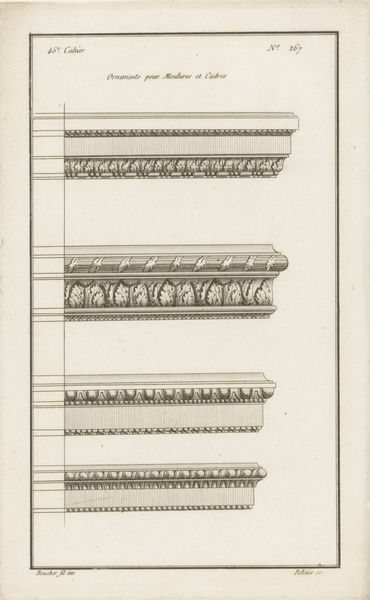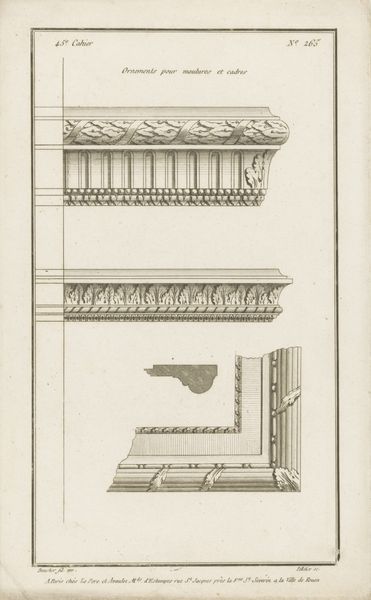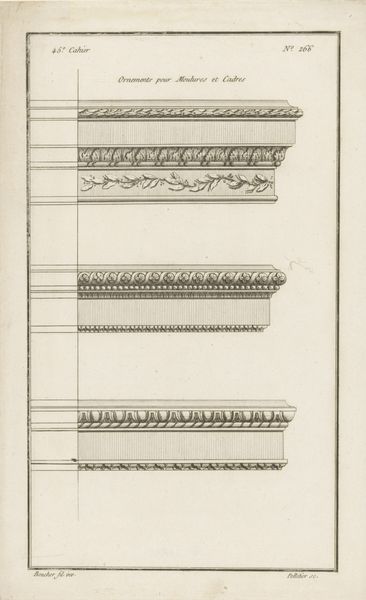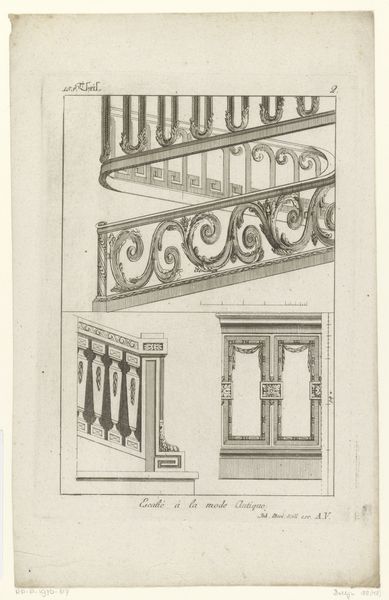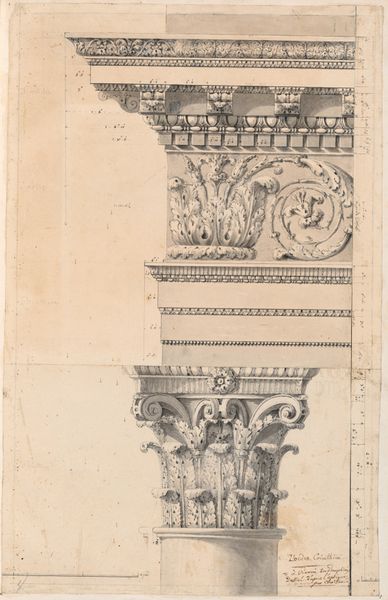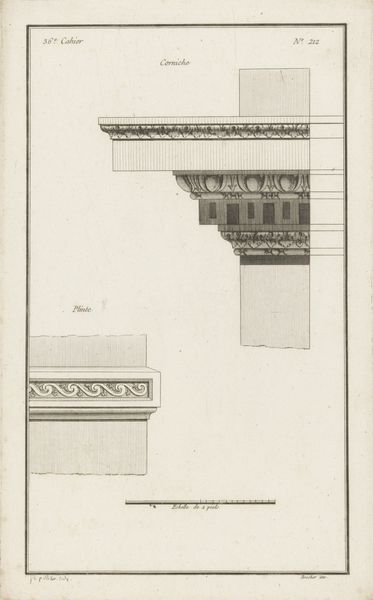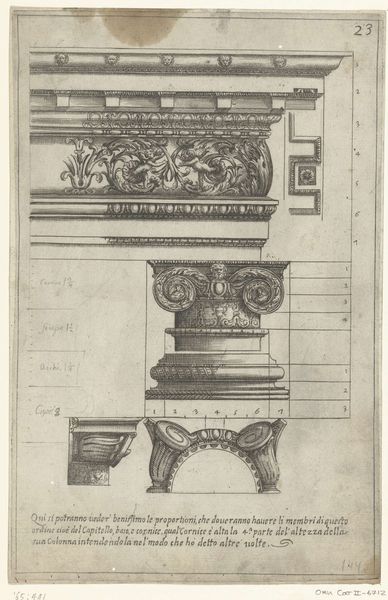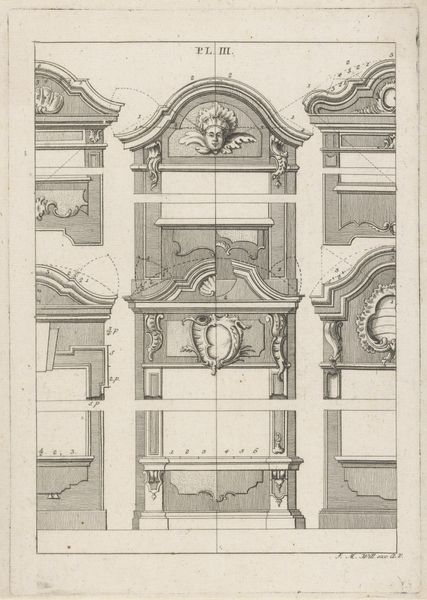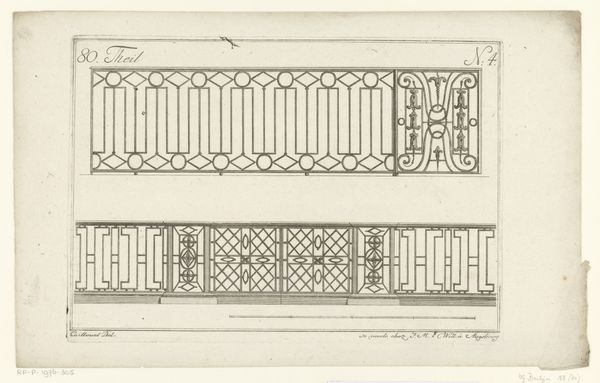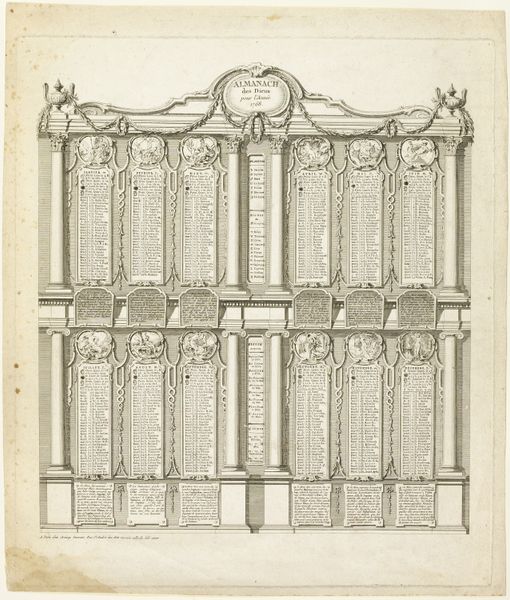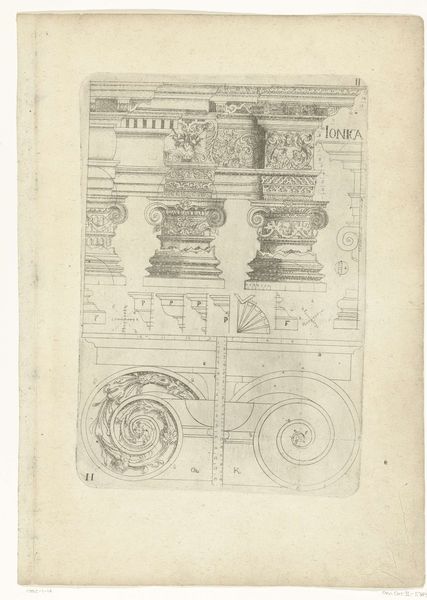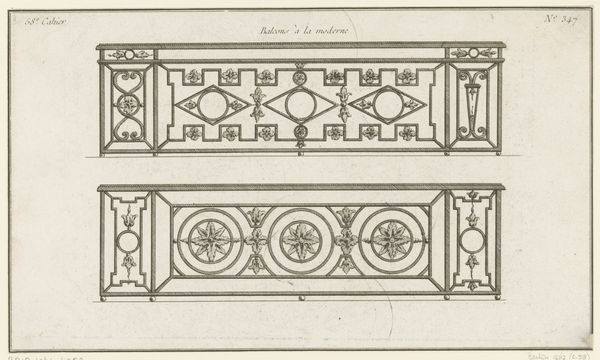
drawing, engraving, architecture
#
drawing
#
neoclacissism
#
aged paper
#
toned paper
#
light pencil work
#
homemade paper
#
ink paper printed
#
parchment
#
pencil sketch
#
old engraving style
#
sketch book
#
personal sketchbook
#
geometric
#
line
#
decorative-art
#
engraving
#
architecture
Dimensions: height 328 mm, width 205 mm
Copyright: Rijks Museum: Open Domain
Editor: We’re looking at "Drie Lijsten," or "Three Frames," an engraving from somewhere between 1772 and 1779 by Jean Pelletier, here at the Rijksmuseum. There's something so calming about its symmetry and the precision of the lines. How do you interpret this work within its historical context? Curator: This engraving reflects the rise of Neoclassicism, which championed a return to the perceived purity of classical antiquity. These meticulous drawings of mouldings weren’t just decorative; they represented a larger cultural shift towards order, reason, and civic virtue. Can you see how this desire for rationalism influenced not only the subject matter but the very technique of the piece? Editor: Absolutely, the clean lines and geometrical forms speak to that. So, were these types of engravings common, or were they trying to reach a larger audience? Curator: These prints were circulated widely, not as fine art necessarily, but as design templates. Think about it – pattern books democratized access to 'good taste.' They offered builders, artisans, and even homeowners, models for incorporating Neoclassical elements into buildings and furnishings. This artwork is as much a commodity of trade as it is art. Editor: That's fascinating! I hadn't considered the impact of printmaking on spreading aesthetic ideals so broadly. It shifts my understanding completely! Curator: Exactly! Understanding art within its socio-economic context illuminates its multiple layers of meaning and its cultural role in its era, beyond pure aesthetics. These moldings now speak to political as well as decorative intentions. Editor: Thanks, I appreciate your perspective. I'll never see decorative art quite the same way again!
Comments
No comments
Be the first to comment and join the conversation on the ultimate creative platform.

